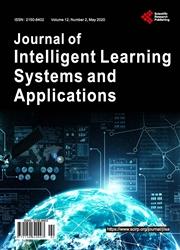A Minimal Subset of Features Using Feature Selection for Handwritten Digit Recognition
引用次数: 13
Abstract
Many systems of handwritten digit recognition built using the complete set of features in order to enhance the accuracy. However, these systems lagged in terms of time and memory. These two issues are very critical issues especially for real time applications. Therefore, using Feature Selection (FS) with suitable machine learning technique for digit recognition contributes to facilitate solving the issues of time and memory by minimizing the number of features used to train the model. This paper examines various FS methods with several classification techniques using MNIST dataset. In addition, models of different algorithms (i.e. linear, non-linear, ensemble, and deep learning) are implemented and compared in order to study their suitability for digit recognition. The objective of this study is to identify a subset of relevant features that provides at least the same accuracy as the complete set of features in addition to reducing the required time, computational complexity, and required storage for digit recognition. The experimental results proved that 60% of the complete set of features reduces the training time up to third of the required time using the complete set of features. Moreover, the classifiers trained using the proposed subset achieve the same accuracy as the classifiers trained using the complete set of features.基于特征选择的手写数字识别最小特征子集
许多手写体数字识别系统都是利用全套特征建立起来的,以提高识别的准确性。然而,这些系统在时间和记忆方面都落后了。这两个问题是非常关键的问题,尤其是对于实时应用程序。因此,将特征选择(FS)与合适的机器学习技术一起用于数字识别,通过最小化用于训练模型的特征数量,有助于解决时间和记忆问题。本文使用MNIST数据集研究了各种FS方法和几种分类技术。此外,还实现并比较了不同算法(即线性、非线性、集成和深度学习)的模型,以研究它们对数字识别的适用性。本研究的目的是识别相关特征的子集,该子集除了减少数字识别所需的时间、计算复杂性和存储外,还提供至少与完整特征集相同的精度。实验结果证明,60%的完整特征集将训练时间减少到使用完整特征集所需时间的三分之一。此外,使用所提出的子集训练的分类器实现了与使用完整特征集训练的分类器相同的精度。
本文章由计算机程序翻译,如有差异,请以英文原文为准。
求助全文
约1分钟内获得全文
求助全文

 求助内容:
求助内容: 应助结果提醒方式:
应助结果提醒方式:


